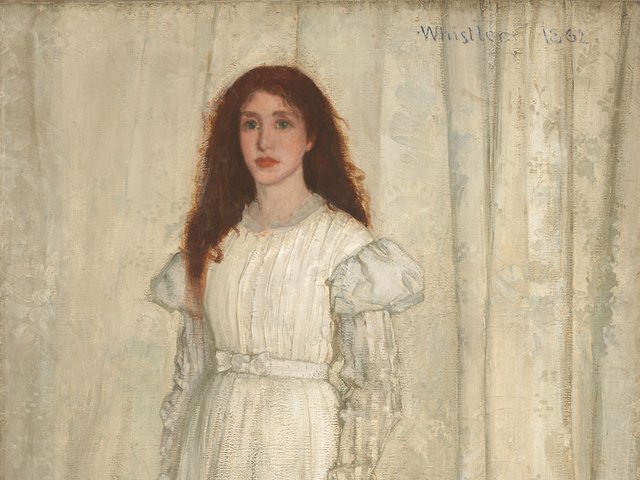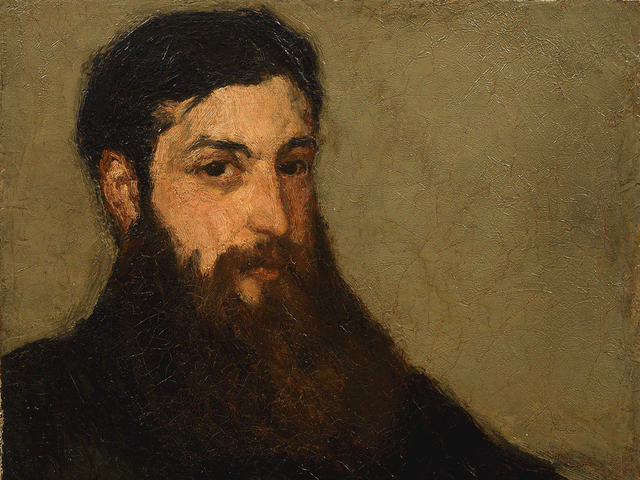An important review of the career of James McNeill Whistler (1834-1903) is promised in a major survey of his art which opens at the Tate Gallery in the middle of this month (13 October-8 January 1995).
Sponsored by Reed Elsevier, the exhibition will be shown at the Musée d’Orsay, Paris (6 February-30 April 1995) and at the National Gallery of Art, Washington (28 May-20 August 1995), where it will benefit from the proximity of “The Peacock Room”, the artist’s magnificent decorative scheme which has recently been restored and reassembled in the Freer Gallery of Art.
Responsible for selecting and cataloguing the exhibition is the curatorial team of Richard Dorment, art critic of the Daily Telegraph, Nicolai Cikovsky, curator of American and British paintings at the National Gallery of Art, Washington, and Margaret MacDonald, Research Fellow at the Centre for Whistler Studies, Glasgow University, who, with Andrew McLaren Young, Robin Spencer and Hamish Miles, compiled the catalogue raisonné of Whister’s oil paintings (Yale University Press 1980) and has written the companion volume of the artist’s works on paper to be published in the autumn.
Speaking To the Art Newspaper, Mr Dorment says that his exhibition’s premise is that Whistler should be seen as an eminent Victorian, as fundamental as John Ruskin (with whom he contested a bitter libel suit), Thomas Carlyle or William Morris, rather than as a prefiguration of abstraction, a position into which he has been so temptingly cast in the past. He was also a fascinating international figure. Born in Massachusetts, his father an engineer employed in St Petersburg, he studied in Paris with Charles Gleyre, where he became a disciple of Courbet and forged friendships with the Impressionist generation including Monet, whose membership of the Beefsteak Club he sponsored. After a period as a French artist, he reinvented himself as a painter in the grand tradition of the British school of portraiture, adopting a new style as a result of looking at the pictures of Van Dyck, Reynolds and Gainsborough shown in temporary exhibitions organised by Henry Cole in South Kensington.
These are credentials which make Whistler the epitome of a contemporary artist at a time when national identities are becoming less important, but when critics are denigrating innovation with the vehemence which Ruskin directed against his work.
The organisers have selected sixty-eight oil paintings, eighty-four pastels, watercolours and drawings, fifty-three etchings and lithographs and four printed books, the largest accumulation of Whistler’s art since the memorial exhibitions staged in Boston (1904) and Paris and London (1905). Intriguing juxtapositions of related paintings will include “Symphony in White No 1: The White Girl” (1862, National Gallery of Art, Washington), famously exhibited in the Salon des Refusés in Paris in 1863, with “Symphony in White No 2: The Little White Girl” (1864, Tate Gallery) and “Symphony in White No 3” (1865-67, Barber Institute, Birmingham), three canvases crucial to Whistler’s development and never previously exhibited together; and “Arrangement in Grey and Black: Portrait of the Painter’s Mother” (1871, Musée d’Orsay), the first painting by an American artist to enter the French national collections, with “Arrangement in Grey and Black No 2: Portrait of Thomas Carlyle” (1872-73, Glasgow Art Gallery and Museum) and “Harmony in Grey and Green: Miss Cicily Alexander” (1872, Tate Gallery), loaned by the sitter’s father to the Venice Biennale in 1899.
Other important loans include “At the Piano” (1859, Taft Museum of Art) and a series of twenty-five paintings and works on paper bequeathed by Whistler’s executrix, Rosalind Bernie-Philip, to the University of Glasgow upon her death in 1958 and now belonging to the Hunterian Museum. There are rooms reserved for Venetian pastels and the nocturnes, those spare and beautiful riverscapes which Whistler created between Battersea and Westminster bridges in a technique apparently imitating British watercolour painting and which offer an interesting precedent for the serial paintings of Monet and Pissarro.




